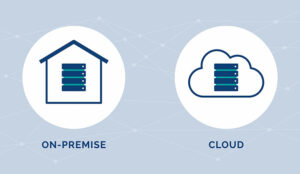Magnus Geverts of Calabrio shares his top tips for a smooth and successful transition to a cloud-first approach.
As economies recover following the Coronavirus pandemic, cloud-based contact centres will become standard – that’s the verdict of over 300 contact centre professionals when asked about the future of their industry.
Even before anyone had heard of COVID-19, the shift was happening, but the acute pressures of managing virtualized home-working teams while meeting rising customer expectations have accelerated the rate of change.
The statistics are revealing: one in ten contact centres is now fully cloud-based, eight in ten are ramping up deployment of cloud-based software and an astonishing 39% either plan to invest further in the technology or take the final leap into the cloud, if they haven’t already done so.
These results reflect what our own customers have witnessed throughout the pandemic. Organizations which have relied on an on-premise solution have often struggled to cope with the dual lockdown pressures of increased customer demand and a new working from home (WFH) workplace culture.
3 Key Questions to Ask
With greater demand for remote working and employee flexibility, there is no better time to adopt cloud-based contact centre technology. However, here are three things to consider:
1. Why Move to the Cloud in the First Place?
Cloud-based communications systems offer far more flexibility, resilience and security than traditional on-premises solutions, without the need to hire additional IT staff or invest in expensive hardware.
Strengthening your business case for cloud should start with people, the bedrock of great customer service.
Cloud-based workforce management (WFM) solutions offer far more flexibility than traditional on-premise solutions.
Agent autonomy and self-service, including shift trades, booking time off and obtaining overtime shifts, are made easy using a mobile app or secure staff portal.
Wherever agents, planners or managers are based, they benefit from access to WFM for greater control of often tricky WFH environments.
The latest cloud solutions scale up and down flexibly, making it easy to add new channels, services and users in an instant, thereby boosting productivity, customer loyalty and longer-term profitability.
Finally, as customer expectations rise exponentially, organizations are seeking new ways to differentiate themselves through customer service.
The cloud facilitates fast and simple integration between these sophisticated tools and other important applications, including CRM, to capture vital intelligence inside and outside the contact centre and add context to customer conversations.
When agents know why a customer is contacting them in the first place, can understand their mood and have sight of their complete conversation history, they are empowered to deliver a far richer, relevant and satisfying customer experience.
After all, brands that go beyond the simple “what happened?” to “why did it happen?” will be the outright winners.
2. What Should I Look For?
As contact centres prioritize moving to the cloud and investment pours into the marketplace, organizations are spoilt for choice.
Big names and well-established vendors jostle alongside the new disruptive kids on the block, such as Amazon Connect, who are introducing exciting new developments.
Choice is undoubtedly good, but it can be confusing for cloud novices.
The best technology vendors offer a blend of rich features and functionality with a strong service mentality and long-term vision.
When choosing a new vendor, be guided by a checklist of key qualities. One of the essential “must-haves” is a cloud-first value proposition. This means one single platform that is purpose-built for the cloud rather than adapted from a legacy system and is designed to deliver a single unified experience.
A good technology partner must enable a flexible transition to the cloud while maintaining business as usual (BAU) operations.
Meanwhile, opt for a solution set that scales readily with changing customer and business requirements and delivers quick win features to maximize ROI.
3. What Could Go Wrong and How to Avoid the Pitfalls?
One of the main motivating factors for moving to the cloud is it simplifies contact centre operations while reducing IT and administration costs. However, choosing the wrong technology and aligning with the wrong partner can do more harm than good.
Unwise choices merely increase the time and number of headaches associated with manually integrating standalone systems and trouble-shooting end-user issues.

Magnus Geverts
Avoid the pitfalls of choosing the wrong supplier. Look for a partner with an innovative outlook, proven experience and technology that is customizable, but comes with basic out-of-the-box contact centre functionality as standard, is quick to deploy, easy to use and even easier to maintain.
Take the final leap into the cloud to enjoy the benefits of improved workforce flexibility, enhanced agent engagement and performance while gaining valuable insights across the contact centre and the overall business.
For more guidance, ideas and information about planning your shift to the cloud, download our “Making the Move to the Cloud” eBook.
If you would like to take a look at Calabrio’s cloud solutions, visit: www.calabrio.com
For more information about Calabrio - visit the Calabrio Website
Call Centre Helper is not responsible for the content of these guest blog posts. The opinions expressed in this article are those of the author, and do not necessarily reflect those of Call Centre Helper.
Author: Calabrio
Published On: 19th Mar 2021 - Last modified: 14th Jun 2024
Read more about - Guest Blogs, Calabrio, Magnus Geverts






 The digital foundation of a customer-centric contact centre, the Calabrio ONE workforce performance suite helps enrich and understand human interactions, empowering contact centres as a brand guardian. Calabrio ONE unites workforce optimisation (WFO), agent engagement, and business intelligence solutions into a cloud-native, fully integrated suite.
The digital foundation of a customer-centric contact centre, the Calabrio ONE workforce performance suite helps enrich and understand human interactions, empowering contact centres as a brand guardian. Calabrio ONE unites workforce optimisation (WFO), agent engagement, and business intelligence solutions into a cloud-native, fully integrated suite. 








